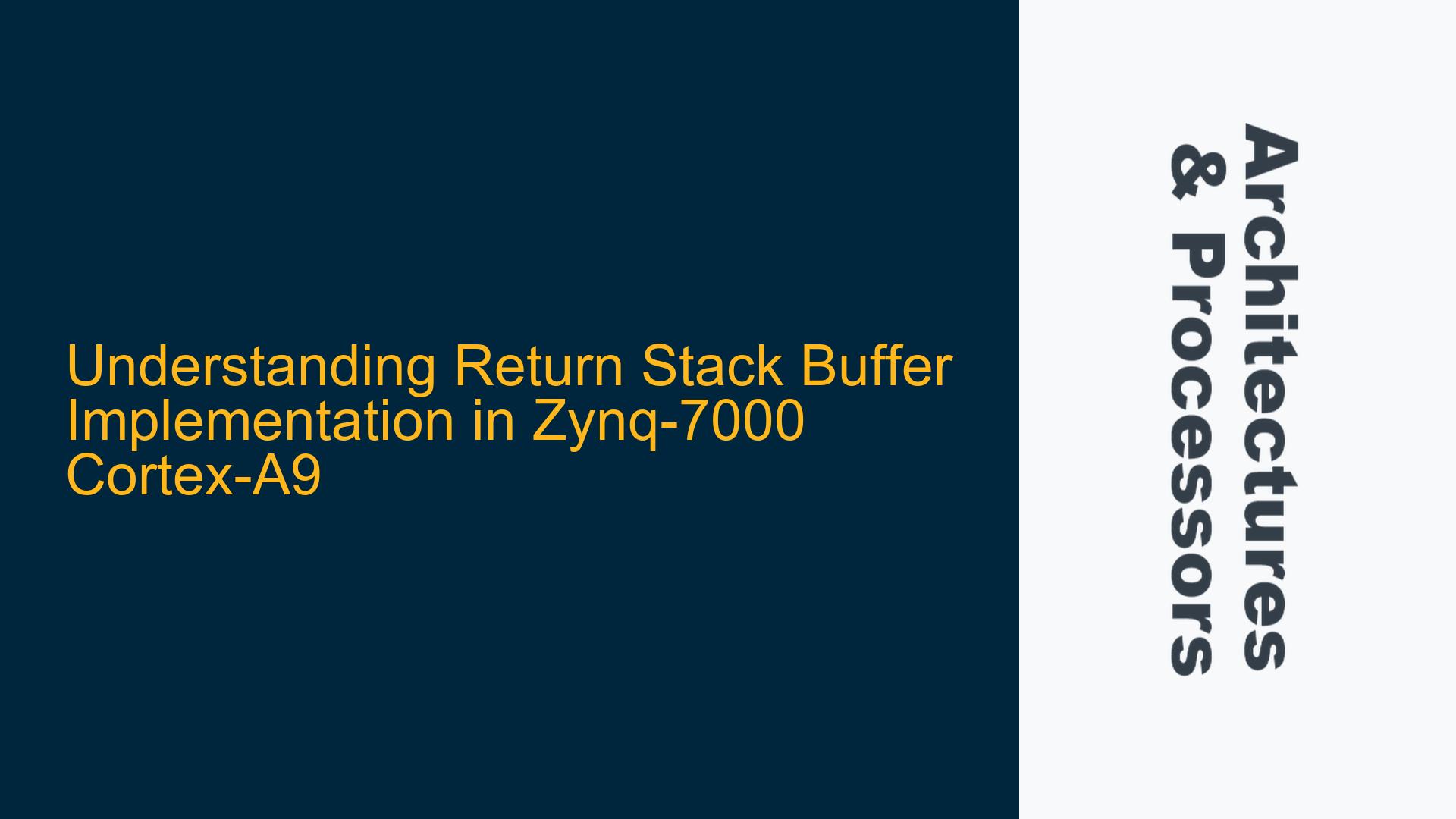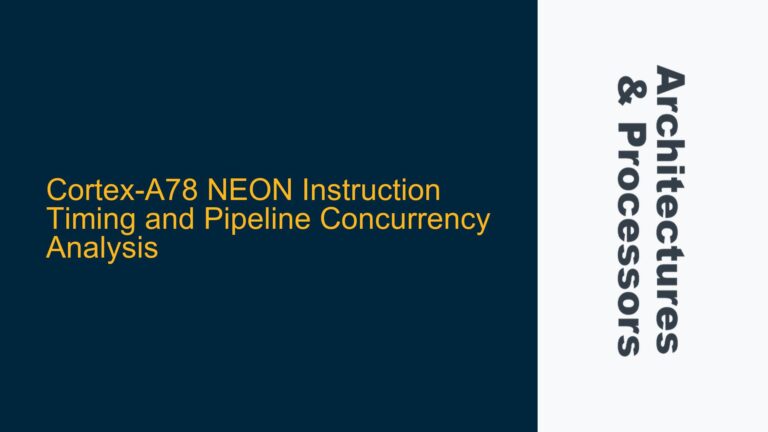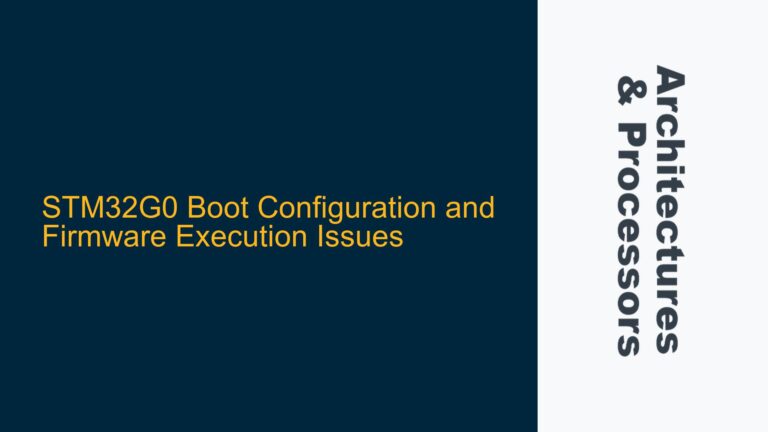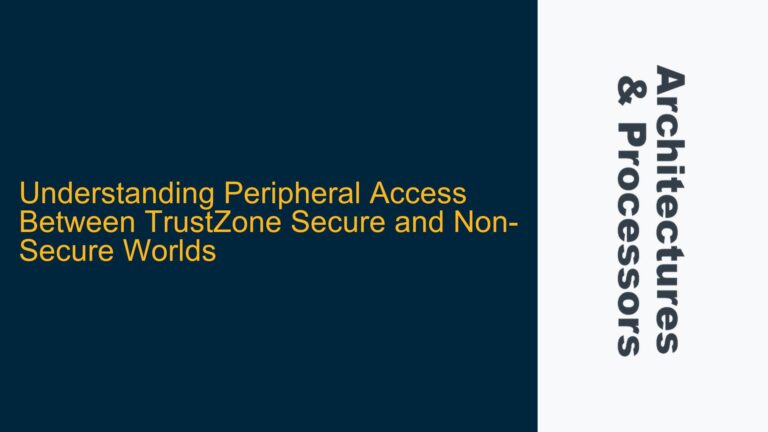ETMCCER Register Indicates Return Stack Buffer (RSB) Implementation Status
The Zynq-7000 SoC, which integrates a dual-core ARM Cortex-A9 processor, has been a popular choice for embedded systems due to its balance of performance and power efficiency. One of the key features of modern processors, including the Cortex-A9, is the implementation of program flow speculation techniques such as branch prediction and return stack buffers (RSB). These features are critical for improving instruction pipeline efficiency and overall system performance. However, the implementation details of these features can sometimes be ambiguous, especially when dealing with specific registers and their reset values.
The Embedded Trace Macrocell (ETM) is a debugging component that provides real-time trace capabilities for ARM processors. The ETM Configuration Control and Enable Register (ETMCCER) is one of the registers used to configure and monitor the ETM. Bit 23 of the ETMCCER register specifically indicates whether the Return Stack Buffer is implemented in the Cortex-A9 processor. In the Zynq-7000 Technical Reference Manual (TRM), the reset value of this bit is documented as 0, which has led to confusion about whether the RSB is actually implemented in the Cortex-A9.
The Cortex-A9 Technical Reference Manual (TRM) does not list the Return Stack Buffer as an optional feature, implying that it should be present in all implementations of the Cortex-A9. However, the reset value of 0 in the ETMCCER register suggests that the RSB might not be accessible or traceable via the ETM. This discrepancy raises questions about the actual implementation status of the RSB in the Zynq-7000 SoC and how to verify its presence and functionality during program execution.
Misinterpretation of ETMCCER Bit 23 and RSB Accessibility
The primary confusion stems from the interpretation of the ETMCCER register’s Bit 23. A reset value of 0 in this bit does not necessarily mean that the Return Stack Buffer is unimplemented. Instead, it indicates that the RSB is not accessible or traceable through the ETM. This distinction is crucial because it separates the existence of the RSB from its observability via debugging tools.
The Cortex-A9 processor’s RSB is a hardware feature designed to improve the efficiency of function return operations by predicting return addresses. This prediction reduces the pipeline stalls that would otherwise occur if the processor had to fetch return addresses from memory. The RSB is an integral part of the Cortex-A9’s branch prediction mechanism, and its presence is assumed in all implementations of the processor.
However, the ETMCCER register’s Bit 23 is specifically related to the ETM’s ability to trace the RSB. A value of 0 indicates that the ETM cannot trace the RSB, which means that debuggers and other tools relying on the ETM will not be able to monitor the RSB’s activity. This limitation does not affect the RSB’s functionality during normal operation but does impact the ability to debug or analyze its behavior.
To further complicate matters, the Zynq-7000 TRM lists the RSB as a feature of the Cortex-A9, but it does not provide explicit details about its accessibility via the ETM. This lack of clarity has led to the assumption that the RSB might not be implemented, especially when combined with the ETMCCER register’s reset value.
Reading ETMCCER Register and Verifying RSB Implementation
To determine whether the Return Stack Buffer is implemented and accessible in the Zynq-7000 Cortex-A9, it is necessary to read the ETMCCER register during program execution. This can be achieved by accessing the register’s memory-mapped address directly. The ETMCCER register is located at the address 0xF889C1E8 in the Zynq-7000 SoC.
Reading the ETMCCER register requires writing a small piece of code that accesses the register’s address and retrieves its value. This can be done using a pointer to the register’s address in C or assembly language. For example, in C, the following code snippet can be used to read the ETMCCER register:
uint32_t *ETMCCER = (uint32_t *)0xF889C1E8;
uint32_t value = *ETMCCER;
The value retrieved from the ETMCCER register can then be analyzed to determine the status of Bit 23. If Bit 23 is 0, it confirms that the RSB is not traceable via the ETM. However, this does not necessarily mean that the RSB is unimplemented. To verify the RSB’s presence, additional steps are required.
One approach is to analyze the performance of function calls and returns in the Cortex-A9 processor. If the RSB is implemented, the processor should exhibit improved performance for function return operations compared to a scenario where the RSB is not present. This can be measured using performance counters available in the Cortex-A9, which can track pipeline stalls and branch prediction accuracy.
Another method is to consult the Cortex-A9 Technical Reference Manual (TRM) and the Zynq-7000 TRM for any additional details about the RSB’s implementation. While the TRMs may not provide explicit information about the RSB’s accessibility via the ETM, they should confirm its presence as a standard feature of the Cortex-A9.
In conclusion, the reset value of 0 in the ETMCCER register’s Bit 23 indicates that the Return Stack Buffer is not traceable via the ETM, but it does not imply that the RSB is unimplemented. The RSB is a standard feature of the Cortex-A9 processor and is likely present in the Zynq-7000 SoC. To verify its presence and functionality, developers can read the ETMCCER register, analyze performance counters, and consult the relevant technical documentation.






